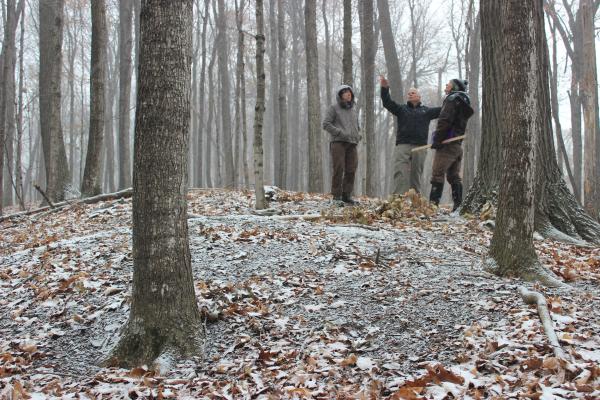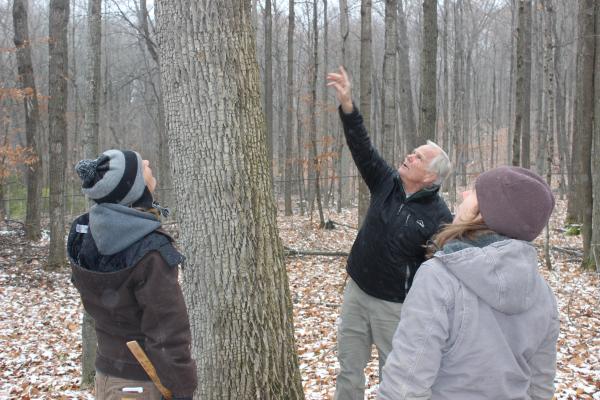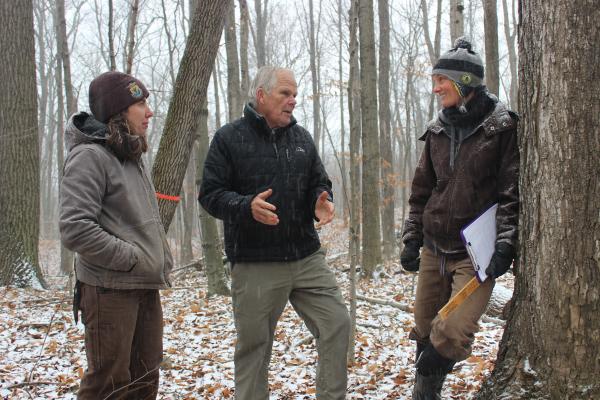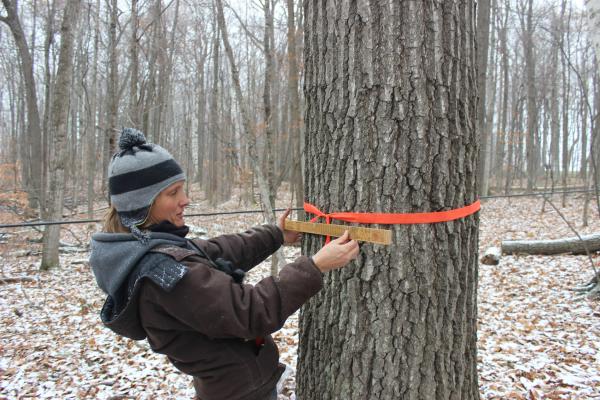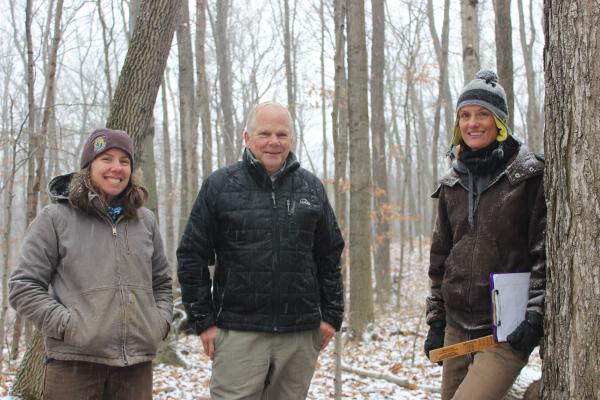Expanding a Sugarbush, Tending the Woods
Shelburne Farms is expanding its 21-acre sugarbush this sugaring season and adding 800-1,000 taps, which we hope will boost our production capacity by about 50% -- from over 700 gallons of maple syrup last year to more than 1,000 in 2020.
It’s a fairly common Vermont story these days. Vermont is the nation’s leading maple producer, making nearly half the national total. And maple production has tripled here in the past decade, as sugaring has moved more center stage among farmers and landowners, helping to maintain Vermont’s working landscape.
To prepare for tapping more trees, Woodlands Manager Dana Bishop and Assistant Market Gardener Lynn Wolfe walked our sustainably managed woods and flagged trees in the 12-acre expansion area. These trees will be cut in the coming weeks to make way for new sap lines and to allow smaller maples to grow more vigorously.)
Dana invited Shelburne Farms Board Member and long-time Farm friend David Marvin to walk the woods and offer his opinions and advice for an hour. (David and his wife Lucy -- and now their children -- have run the sugar-making operation Butternut Mountain Farm in Johnson for over 45 years.)
It was a productive hour.
David moves through the sugarbush like the forester and sugarmaker he has been for much of his life: with easy grace, a knowing eye, and an obvious love and respect for the woods. The job, he says, “is to identify your crop trees, and your trees to harvest.”
But a sugarbush isn’t a monocrop of sugar maples. Far from it. In fact, David says, “I try not to change the tree diversity from what existed before the sugarbush.” That’s a guiding principle for us, too.
The team stops to evaluate some ash trees. There aren’t a lot of them in our sugarbush, but because of the Emerald Ash Borer insect, their fate is grim. Most if not all are destined to die from the borer, and when they die, ashes quickly become brittle and dangerous to harvest. It’s an argument for taking them down sooner rather than later. On the other hand, there’s a chance that some may be resistant to the insect, and because of their small canopies, they don’t pose any immediate shade threat to young maple saplings. Dana says that she is basically in wait-and-see mode.
They move on and David stares up the trunk of a tall, large oak, “This is a couple thousand dollar tree,” he estimates. “Why not take a couple down like this and make some revenue from selling veneer oak?” Dana is concerned that their sprawling canopies would damage surrounding maples on the way down. It’s a discussion that will wait for Richard Lavigne, who’ll be working with the Shelburne Farms woodlands team to harvest the trees in a few weeks. (Richard and his father have been harvesting trees at Shelburne Farms since the 1970s!)
They briefly pause at a shagbark hickory that Dana wants to keep for bat habitat. Then they pass a birch tree. “Should this come down?” asks Dana. “I’d leave it,” David says. “I just like looking at them in my woods.” Apparently whimsy is one criteria for evaluating a tree.
As they hoof it through the woods, the conversation ranges from the visual impact of sap tubing on visitors (“it shows people that this is a working landscape,” says David), to the value of running underground main lines (“No freezing, no shoveling,” he says, “but installing them does a lot of damage to the woods.”)“What about this basswood?” Dana asks. David chuckles, “They make a really good winter dendrology test. You’d be surprised how many basswoods are tapped because people think they’re maples.”
David suggests thinking along a 20-year time frame when deciding what trees to cut or leave. That’s based on Shelburne Farms’ forestry management plan, which calls for harvesting areas on a 20-year rotation. If you leave a particular tree, what’s likely to happen to it over the next 20 years? Will it start losing branches? Might it fall over of its own accord? Will it crowd out maple saplings?
“This is kind of like playing God,” he admits.
He’s impressed with Dana and Lynn, too. “You guys are doing fine,” he says. “You guys don’t need me.” That may be true. But it’s certainly nice to have his expertise in the sugarbush as we look forward to making more maple syrup next season!
Shelburne Farms maple syrup is now available in new glass bottles through our online store!

